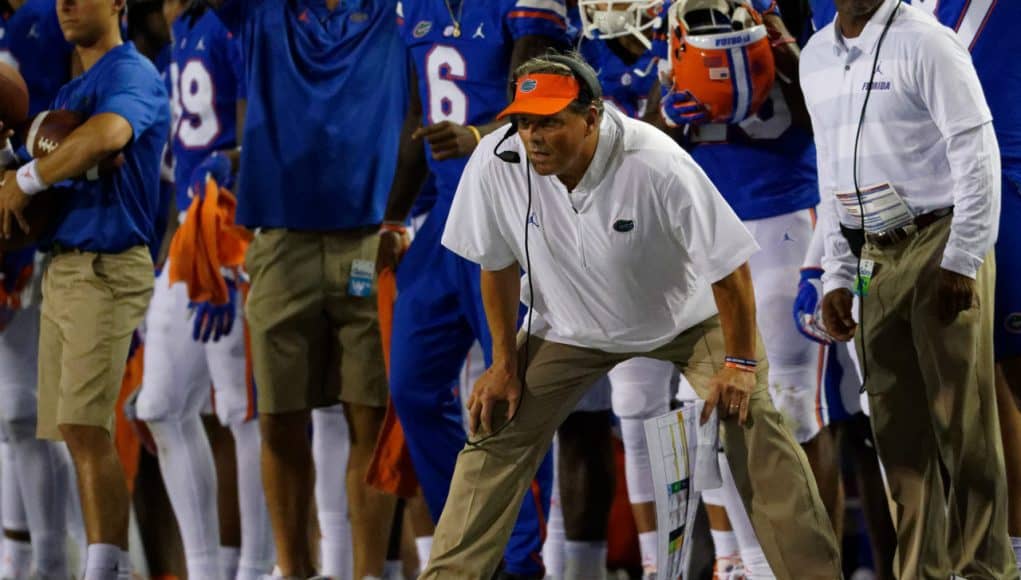The spread offense revolution began at the highest level of college football at the start of this century. In those early days, spread attacks had to adjust to defenses as the innovators figured things out.
Florida ended up becoming a spread offense laboratory. The scheme as described by Utah quarterbacks coach Dan Mullen in 2003 — one that didn’t involve fullbacks and largely used tight ends as big receivers — didn’t last beyond the bye week in 2005. Afterwards, former fullback Billy Latsko returned to offense from the linebacker position he’d been exiled to. He played a hybrid fullback/blocking tight end role with the occasional pass pattern to the flat. The new offense had to incorporate an old role after all.
Even bigger than Latsko’s hybrid role was the one Percy Harvin began playing a year later. He was a great wide receiver, but he could be a credible running back too. After Harvin shredded his defense on the ground in 2008, Steve Spurrier said he’d love to see Percy as the tailback in an I-formation offense. Harvin was that good at both roles.
Mullen never found another Percy at Mississippi State — he may never find another one again — but he didn’t give up on hybrid roles. Towards the end of his tenure in Starkville, he used tight end Jordan Thomas almost exclusively as a big wide receiver. That kind of usage is now common in the NFL, and we saw it with Kyle Pitts this fall.
Hybrid players exist on defense too. The most well known is the hybrid defensive end/outside linebacker spot in a 3-4, called the Buck position by both Will Muschamp and Todd Grantham. It’s been growing in popularity for quite a while now.
As spread offenses hit their stride, defenses have had to be the ones to adjust. One such adjustment has been to add more hybrid positions. Grantham brought one with him to Gainesville and calls it the star position. It’s the spot Chauncey Gardner-Johnson was in this year, and it does things that a corner, safety, and sometimes even linebacker might do.
The star mainly is a defensive back, so its advent meant that Florida adopted the most common adjustment to spread offenses: using nickel as the base defense. UF did use some 3-4 this year, but as you could see from the weekly depth charts, the 3-3-5 was the standard grouping.
As teams adopt more hybrid players on both sides of the ball, there’s been talk about moving to what’s being called “positionless football”. I have reason to believe that on defense at least, that’s the direction Florida is headed. I don’t know if Mullen and Grantham would use that term, but I think they’ve tipped their hands in three ways on this matter.
See the rest of the analysis exclusively on our insider forum!



Lol.